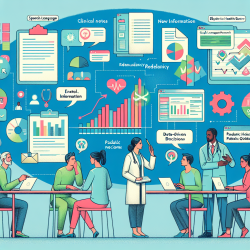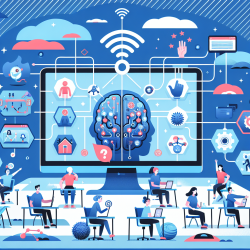Introduction
In the realm of speech-language pathology and clinical practice, the ability to discern clinically relevant new information from redundant data is crucial. This task becomes increasingly challenging with the vast amounts of data contained within electronic health records (EHRs). The research article "Detecting Clinically Relevant New Information in Clinical Notes Across Specialties and Settings" offers valuable insights into this challenge, providing practitioners with data-driven methods to enhance their clinical note-taking efficiency.
Understanding Redundancy in Clinical Notes
Redundancy in clinical notes is a common issue, often resulting from the copy-paste functionality in EHRs. This practice can lead to lengthy, repetitive notes that obscure new, clinically relevant information. According to the study, outpatient and inpatient notes exhibit high levels of redundancy, with pediatric notes showing the greatest amount at 75%. This redundancy can hinder the ability of clinicians to quickly identify important updates in a patient's condition.
Automated Detection of New Information
The research explores the use of statistical language models augmented with semantic similarity measures to detect new information in clinical notes. While the addition of semantic similarity metrics improved recall, it did not significantly enhance overall performance. However, the study highlights the importance of high recall in clinical settings, where missing critical information can have serious implications.
Implications for Practitioners
For practitioners, particularly those in pediatric settings, the findings suggest a need to be vigilant about note redundancy. By implementing automated methods to highlight new information, clinicians can improve their note-taking efficiency, ultimately leading to better patient outcomes. The study's results can guide practitioners in refining their documentation practices, ensuring that essential information is readily accessible and reducing the cognitive load associated with reviewing lengthy notes.
Encouraging Further Research
While the study provides a robust foundation for understanding redundancy in clinical notes, it also opens avenues for further research. Practitioners and researchers are encouraged to explore additional methods for improving the precision of new information detection. This could involve developing more sophisticated algorithms or integrating user feedback to refine the detection process.
Conclusion
The ability to efficiently navigate and extract relevant information from clinical notes is essential for effective patient care. By leveraging automated detection methods, practitioners can enhance their documentation practices, leading to improved clinical outcomes. For those interested in delving deeper into the study's findings, the original research paper can be accessed here.










